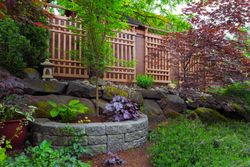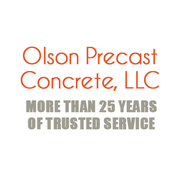
A retaining wall is a garden feature in which a low, sturdy wall is used to hold soil back. This can be used to create flat areas on a hillside, to create large planters and raised flower beds, and to add tiers to your garden. A flimsy wall will be unable to hold back the weight of the dirt. There are, therefore, four types of reinforcement in these walls. You’ll find more information on these reinforcements below.
How Precast Concrete Retaining Walls Are Reinforced
1. Gravity
 This retaining wall uses a thick layer of heavy material. The weight of the wall is sufficient to stop the force of the dirt from moving it. This wall is typically made from precast concrete segments, brick, or stone.
This retaining wall uses a thick layer of heavy material. The weight of the wall is sufficient to stop the force of the dirt from moving it. This wall is typically made from precast concrete segments, brick, or stone.
2. Cantilevered
Sometimes called a reinforced retaining wall, it uses internal L-shaped supporting bars. The upper portion of the L runs through the wall, while the lower part is embedded under the wall. The downward weight of the soil is greater than the sideways force it exerts, so the dirt itself keeps the wall in place.
3. Anchored
This wall also uses underground supports. The difference is that cables are run between buried anchors and the wall, keeping it in place. The tension of the cables holds the wall up.
4. Sheet Piling
This method relies on the strength of the wall material itself, so it works best for short retaining walls that aren’t holding back much dirt. The bottom third of the wall is buried into the ground, with the wall material often corrugated for strength. This works best in soft soil, where it’s easier to bury the wall without much digging.
If you're interested in building a retaining wall, visit Olson Precast Concrete in West Plains, MO. Serving Howell County, they have over 25 years of history providing a range of precast concrete products, from storm shelters to farm supplies. For a free estimate, call (417) 256-1500 or send a message online.
About the Business
Have a question? Ask the experts!
Send your question

